This article needs additional citations for verification .(August 2011) |
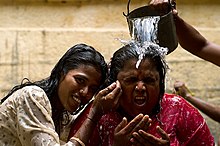
This article needs additional citations for verification .(August 2011) |


Some faiths use water especially prepared for religious purposes (holy water in most Christian denominations, mambuha in Mandaeism, amrita in Sikhism and Hinduism). Many religions also consider particular sources or bodies of water to be sacred or at least auspicious; examples include Lourdes in Roman Catholicism, the Jordan River (at least symbolically) in some Christian churches and Mandaeism called Yardena, the Zamzam Well in Islam and the River Ganges (among many others) in Hinduism.
Faiths that incorporate ritual washing (ablution) include Christianity, [1] [2] [3] Mandaeism, Hinduism, Buddhism, Sikhism, Judaism, Islam, the Baháʼí Faith, Shinto, Taoism, and the Rastafari movement. Immersion (or aspersion or affusion) of a person in water is a central sacrament of Christianity (where it is called baptism); it is also a part of the practice of other religions, including Mandaeism ( masbuta ), Judaism ( mikvah ) and Sikhism ( Amrit Sanskar ). In addition, a ritual bath in pure water is performed for the dead in many religions including Judaism, Mandaeism and Islam. In Islam, the five daily prayers can be done in most cases (see Tayammum ) after completing washing certain parts of the body using clean water ( wudu ). In Shinto, water is used in almost all rituals to cleanse a person or an area (e.g., in the ritual of misogi ).

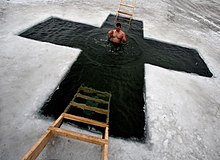
In Hinduism, statues of Durga and Ganesh are immersed in rivers at the final stages of the festivals Durga Puja and Ganesh Chaturthi respectively. [4]
In Christianity, the baptism of Jesus is an important moment in Christian theology and is celebrated in Western Christianity as Epiphany. In the Christian East this feast is celebrated as Theophany on January 6. [5]
Water deities are usually a focus of worship at specific springs or holy wells, but there are also more abstract ocean deities, and deities representing "water" as an abstract element, such as Aban in Zoroastrianism.
Example for local tutelary water deities include Celtic Sulis, worshipped at the thermal spring at Bath, or Ganges in Hinduism, personified as a goddess. The Hindu goddess Saraswati originated as a personification of the Saraswati River in the Rigveda, but became a more abstract deity of wisdom in Hinduism. African examples include the Yoruba river goddess Oshun, the Igbo lake goddess Ogbuide (Uhammiri), the Igbo river goddess Idemili and Agulu Lake (Achebe).[ citation needed ]
Feminist theology is a movement found in several religions, including Buddhism, Hinduism, Sikhism, Neopaganism, Baháʼí Faith, Judaism, Islam, Christianity and New Thought, to reconsider the traditions, practices, scriptures, and theologies of those religions from a feminist perspective. Some of the goals of feminist theology include increasing the role of women among clergy and religious authorities, reinterpreting patriarchal (male-dominated) imagery and language about God, determining women's place in relation to career and motherhood, studying images of women in the religions' sacred texts, and matriarchal religion.

A goddess is a female deity. In many known cultures, goddesses are often linked with literal or metaphorical pregnancy or imagined feminine roles associated with how women and girls are perceived or expected to behave. This includes themes of spinning, weaving, beauty, love, sexuality, motherhood, domesticity, creativity, and fertility. Many major goddesses are also associated with magic, war, strategy, hunting, farming, wisdom, fate, earth, sky, power, laws, justice, and more. Some themes, such as discord or disease, which are considered negative within their cultural contexts also are found associated with some goddesses. There are as many differently described and understood goddesses as there are male, shapeshifting, or neuter gods.
Monotheism is the belief that one god is the only deity. A distinction may be made between exclusive monotheism, in which the one God is a singular existence, and both inclusive and pluriform monotheism, in which multiple gods or godly forms are recognized, but each are postulated as extensions of the same God.

A priest is a religious leader authorized to perform the sacred rituals of a religion, especially as a mediatory agent between humans and one or more deities. They also have the authority or power to administer religious rites; in particular, rites of sacrifice to, and propitiation of, a deity or deities. Their office or position is the "priesthood", a term which also may apply to such persons collectively. A priest may have the duty to hear confessions periodically, give marriage counseling, provide prenuptial counseling, give spiritual direction, teach catechism, or visit those confined indoors, such as the sick in hospitals and nursing homes.
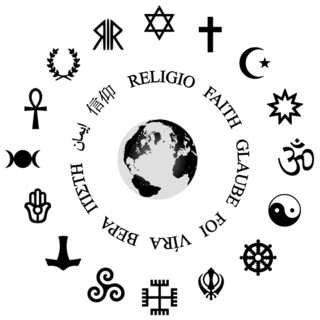
The following outline is provided as an overview of and topical guide to religion:

In Christianity, ablution is a prescribed washing of part or all of the body or possessions, such as clothing or ceremonial objects, with the intent of purification or dedication. In Christianity, both baptism and footwashing are forms of ablution. Prior to praying the canonical hours at seven fixed prayer times, Oriental Orthodox Christians wash their hands and face. In liturgical churches, ablution can refer to purifying fingers or vessels related to the Eucharist. In the New Testament, washing also occurs in reference to rites of Judaism part of the action of a healing by Jesus, the preparation of a body for burial, the washing of nets by fishermen, a person's personal washing of the face to appear in public, the cleansing of an injured person's wounds, Pontius Pilate's washing of his hands as a symbolic claim of innocence and foot washing, which is a rite within the Christian Churches. According to the Gospel of Matthew, Pontius Pilate declared himself innocent of the blood of Jesus by washing his hands. This act of Pilate may not, however, have been borrowed from the custom of the Jews. The same practice was common among the Greeks and Romans.
This is an index page of Wikipedia articles related to the topic of religion.

Idolatry is the worship of a cult image or "idol" as though it were a deity. In Abrahamic religions idolatry connotes the worship of something or someone other than the Abrahamic God as if it were God. In these monotheistic religions, idolatry has been considered as the "worship of false gods" and is forbidden by texts such as the Ten Commandments. Other monotheistic religions may apply similar rules.
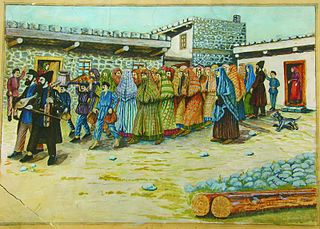
Ritual purification is a ritual prescribed by a religion through which a person is considered to be freed of uncleanliness, especially prior to the worship of a deity, and ritual purity is a state of ritual cleanliness. Ritual purification may also apply to objects and places. Ritual uncleanliness is not identical with ordinary physical impurity, such as dirt stains; nevertheless, body fluids are generally considered ritually unclean.
Cleanliness is both the state of being clean and free from germs, dirt, trash, or waste, and the habit of achieving and maintaining that state. Cleanliness is often achieved through cleaning. Culturally, cleanliness is usually a good quality, as indicated by the aphorism: "Cleanliness is next to Godliness", and may be regarded as contributing to other ideals such as health and beauty.

A place of worship is a specially designed structure or space where individuals or a group of people such as a congregation come to perform acts of devotion, veneration, or religious study. A building constructed or used for this purpose is sometimes called a house of worship. Temples, churches, mosques, and synagogues are examples of structures created for worship. A monastery may serve both to house those belonging to religious orders and as a place of worship for visitors. Natural or topographical features may also serve as places of worship, and are considered holy or sacrosanct in some religions; the rituals associated with the Ganges river are an example in Hinduism.
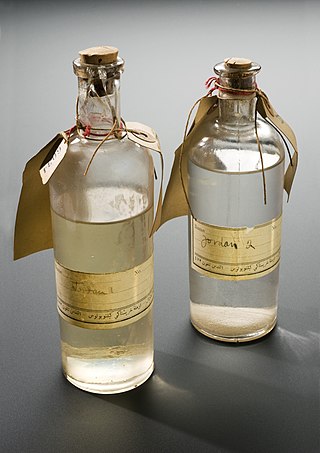
Holy water is water that has been blessed by a member of the clergy or a religious figure, or derived from a well or spring considered holy. The use for cleansing prior to a baptism and spiritual cleansing is common in several religions, from Christianity to Sikhism. The use of holy water as a sacramental for protection against evil is common among Lutherans, Anglicans, Roman Catholics, and Eastern Christians.

In Judaism, ritual washing, or ablution, takes two main forms. Tevilah (טְבִילָה) is a full body immersion in a mikveh, and netilat yadayim is the washing of the hands with a cup.
A supreme deity, supreme god or supreme being is the conception of the sole deity of monotheistic religions or, in polytheistic or henotheistic religions, the paramount deity or supernatural entity which is above all others.

A lavabo is a device used to provide water for the washing of hands. It consists normally of a ewer or container of some kind to pour water, and a bowl to catch the water as it falls off the hands. In ecclesiastical usage it refers to all of: the basin in which the priest washes their hands; the ritual that surrounds this action in the Catholic Mass; and the architectural feature or fitting where a basin or place for one is recessed into the side wall of the sanctuary, or projects from it. If this last includes or included a drain, it is a piscina used for washing the church plate and other fittings, though the terms are often confused. In secular usage, it is an obsolete term for any sink or basin for washing hands, especially in a lavatory.
The study of women and religion examines women in the context of different religious faiths. This includes considering female gender roles in religious history as well as how women participate in religion. Particular consideration is given to how religion has been used as a patriarchal tool to elevate the status and power of men over women. In addition, religion portrays gender within religious doctrines.

A holy water font or stoup is a vessel containing holy water which is generally placed near the entrance of a church. It is often placed at the base of a crucifix or other Christian art. It is used in Catholic, as well as many Lutheran and Anglican churches, to make the sign of the cross using the holy water upon entrance of the church. Holy water is blessed by a priest or a deacon, and its usage by Christians serves as a reminder of their baptismal vows. The holy water font is a derivative of the cantharus, which has been used by Christians since the time of the early Church to perform ablutions before entering the church.
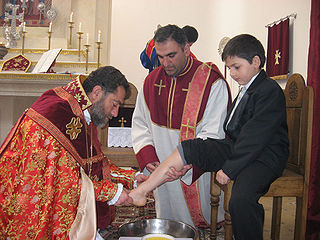
In some denominations of Christianity, there are a number of regulations involving cleanliness before prayer, observing days of ritual purification, as well as those concerning diet and apparel. The Bible has many rituals of purification in areas ranging from the mundane private rituals of personal hygiene and toilet etiquette to the complex public rituals of social etiquette.

A cantharus, also known as a phiala, is a fountain used by Christians for ablution before entering a church. These ablutions involve the washing of the hands, face, and feet. The cantharus is traditionally located in the exonarthex of the church. The water emitted by a cantharus is to be running water. The practice of ablutions before prayer and worship in Christianity symbolizes "separation from sins of the spirit and surrender to the Lord." Eusebius recorded this practice of canthari located in the courtyards of churches, for the faithful to wash themselves before entering a Christian house of worship. The practice has its origins Jewish practice of performing ablutions before entering into the presence of God. In the present-day, canthari are found in Eastern Christian and Oriental Christian churches, though in Western Christianity the cantharus gradually transformed into the holy water font.
Water plays a role in other Christian rituals as well. ... In the early days of Christianity, two to three centuries after Christ, the lavabo (Latin for "I wash myself"), a ritual handwashing vessel and bowl, was introduced as part of Church service.
It was probably out of the Jewish rite that the practice developed among early Christians, especially in the east, of washing their hands and feet before going into church. Early Christian basilicas had a fountain for ablutions, known as cantharus or phiala, and usually placed in the centre of the atrium. They are still found in some Eastern Orthodox churches, notably at the monastery of Laura at Mount Athos, where the phiala is an imposing structure in front of the entrance covered by a dome resting on eight pillars. In several Orthodox churches today worshippers take off heir shoes and wash their feet before entering the church just as Muslims do before going into a mosque.
In the middle of which stood a Fountain for washing as they entered into the Church, called Cantharus and Phiala in some authors. It is further to be noted, that in the middle of the atrium, there was commonly a fountain, or a cistern of water, for people to wash their hands and face, before they went into the church.